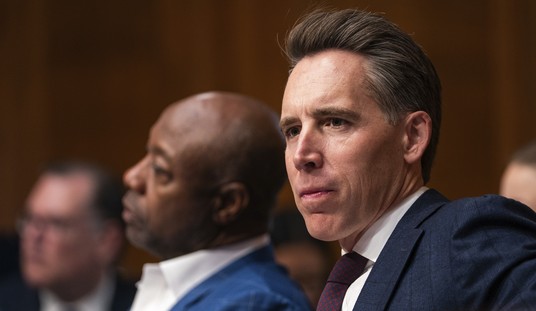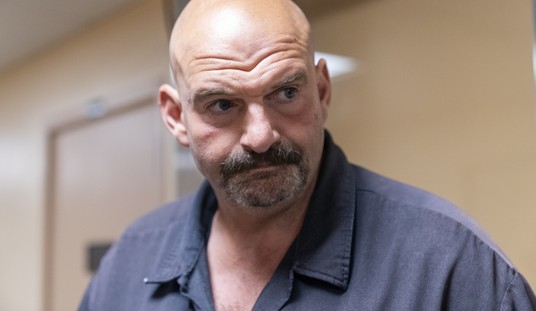The betting site Intrade gives Republicans a better than 50% chance of taking control of the U.S. Senate after the November elections. After picking up seven Senate seats in 2010 — including Scott Brown’s victory in the Massachusetts special election — the GOP needs a net four seats to assure control after 2012. If the Republicans regain the White House, a net gain of three would be sufficient as the vice president serves as tiebreaker.
Twenty-three of the 33 Senate seats being contested in 2012 are presently held by Democrats. Of that number, 12 seats currently held by Democrats are potentially at risk. Seven of these 12 are open-seat races with the Democratic senator retiring. The seven seats: North Dakota and Nebraska (where the GOP candidate is favored); Virginia and Wisconsin (which are considered tossups); and Connecticut, Hawaii, and New Mexico (which are currently rated as leaning Democratic). New Mexico looks the closest of the three.
The five Democratic incumbents at greatest risk of losing their seats, starting with the most vulnerable: Claire McCaskill (Missouri), Jon Tester (Montana), Bill Nelson (Florida), Sherrod Brown (Ohio), and Debbie Stabenow (Michigan).
It is more difficult to oust an incumbent than to win an open-seat race, whether for the Senate or the House. This is particularly true for the Senate, where incumbents have six years to build up a re-election war chest and build ties with the state’s voters. That said, the most vulnerable incumbents tend to be first-termers, and McCaskill, Tester, and Brown all fall in that category. All three won office in 2006, a very big year for Democrats around the country. McCaskill and Tester won very narrow victories: Tester by 1% (3,500 votes); McCaskill by 3% (48,000 votes). Nelson and Stabenow are both in their second term and neither faced a serious challenge in 2006.
McCaskill appears to be in the biggest trouble of any incumbent of either party. She trails all of her potential rivals on the Republican side, and the biggest gap is with Sarah Steelman, who currently leads the GOP contest for the Senate nomination. Missouri has also trended Republican in the last decade. It was the only Bush state of ten targeted by the Obama campaign that McCain won. The GOP won by huge margins in the governor and Senate races in 2010.
Jon Tester is also trailing by a small margin in Montana, where he is running against GOP House member Denny Rehberg, who has also won statewide elections (Montana has only one U.S. House seat). Montana was carried by McCain by 3% in 2008, but recent polls show Romney ahead of Obama by a bigger margin this year.
Ohio is a race in which the Democrats did not expect a fight, but that is no longer the case. Josh Mandel — a 34-year-old Iraq war veteran and Ohio treasurer who won decisively in a statewide race in 2010 — is a tireless campaigner. He has begun to close the gap with Brown, and is tied with him in one poll of likely voters. Brown remains the favorite.
Ohio will get a lot of attention in the presidential race. If Romney carries the state (essential to his chances of winning), that would boost Mandel’s chances, as would Romney picking Senator Rob Portman as his VP choice.
In Florida, polls are all over the place but Nelson is ahead of all possible opponents. His lead is smallest against Congressman Connie Mack, the likely winner of the GOP nomination. Florida is another tossup state for the presidential race — a state that is slightly more conservative than Ohio — and Mack has a near 50% chance of winning. Just as in Ohio, Mack would benefit if Romney chose Florida Senator Marco Rubio to be his running mate.
Michigan appears to be the safest state for the Democrats of the five contests on this list. Stabenow has held a lead over former Congressman Pete Hoekstra in every poll so far, though a few surveys give her a lead in the mid-single digits. Michigan is expected to be a strong state for President Obama despite GOP success in 2010, and this should help Stabenow.
Picking the five most endangered Democratic House members is easier than doing the same for the Republicans, given the large number of first-term Republicans in the House. Larry Sabato, who has done the most systematic review of all the new districts and races, gives the GOP the edge in five open seats now held by Democrats, but in only four races with Democratic incumbents: John Barrow (Georgia 12), Leonard Boswell (Iowa 3), Larry Kissell (North Carolina 8), and Kathy Hochul (New York 27). Three other Democratic incumbents are considered to be in tossup races: Mike McIntyre (North Carolina 7), Jim Matheson (Utah 4), and David Cicilline (Rhode Island 1).
Overall, Sabato says the GOP is ahead in 235 races, the Democrats in 187, with 13 tossups — not a scenario seven months out from election day that would suggest Nancy Pelosi will soon be speaker again.
The Republicans controlled the redistricting process in North Carolina, and did to the Democrats what Mike Madigan and the Democrats did to sitting GOP House members in Illinois. Four of the six House seats held by the GOP that now lean to the Democrats are in Illinois. Three of the nine House seats held by the Democrats that lean to the GOP are in North Carolina, with McIntyre’s being the fourth seat in the state that is at risk of a turnover to the GOP. I think Cicilline’s seat in Rhode Island is safe (Charles Cook rates the district Dem +13).
Iowa lost a seat due to redistricting, and two incumbents, one from each party, are squaring off in Iowa 3. Leonard Boswell, age 78, survived prior challenges in his old district, but now has to deal with a new district and new incumbent Tom Latham.
John Barrow has been a target of the GOP several times already, but in a newly drawn district (by the Republicans), he appears to be more vulnerable. He will not be an easy incumbent to take down, having shown survival skills already.
That is also true of Jim Matheson in Utah, one of America’s reddest states. He is a Democrat in the most GOP-leaning district in the country. Matheson survived a tough challenge in 2010 (when his district was rated GOP +15), winning by just 4%. Matheson chose to run in the new fourth district after passing on a run for the Senate.
Kathy Hochul won a special election for a GOP leaning district in the Buffalo area in 2011 to replace Chris Lee, who resigned after an embarrassing Craigslist sex solicitation. Hochul was aided by a barrage of “Mediscare” campaign ads attacking the Paul Ryan budget as a plan to “kill Medicare as we know it.” She was also assisted by a well-funded third party candidate, who said he was running as the Tea Party candidate. The third party candidate got twice as many votes as the margin of Hochul’s victory. The incumbent will face a tougher test in 2012.
Overall, the GOP is unlikely to knock off more than a few Democratic House incumbents in 2012, because they were so successful knocking off so many in 2010.








Join the conversation as a VIP Member